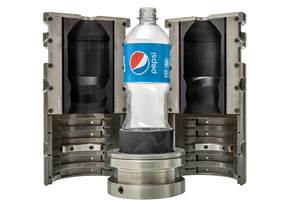A Warranted Sense of Optimism
In both good times and bad (and there seems to have been more of the bad times in recent years), moldmakers expect that the future will be better. And why not? One of the great cultural hallmarks that the U.S. and Canada have shared throughout their respective histories is that the future is bright. Moldmakers are typically self-starters and hard workers, and the only thing that could sustain these traits over a long period time is the dogged belief that you can make tomorrow better than today if you are willing to put in the effort.As an economist, I am frequently prone to just the opposite view. It is no accident that economics is nicknamed “the dismal science.”
.jpg;maxWidth=600)
I recently received an e-mail from a long-time moldmaker in which he exclaimed that moldmakers are an optimistic lot. He was referring to the latest results of my monthly Mold Business Index survey which showed that a strong majority of the respondents expect that future business conditions for moldmakers will be steady or even improve despite the fact that the current business levels have recently registered a decline. Very similar findings were reported in the just-released results of the quarterly survey of mold builders that is compiled and reported by the American Mold Builders Association. According to their Summer Business Forecast, a strong majority of AMBA members also expect future business levels to be stable or improved while the recent trends in their data measuring both backlogs and shipments is “decreasing slightly.”
None of this comes as a surprise to me. I have conducted a monthly survey of American and Canadian moldmakers for over ten years now, and without exception, the question about “Future Expectations” always generates an optimistic response. In both good times and bad (and there seems to have been more of the bad times in recent years), moldmakers expect that the future will be better. And why not? One of the great cultural hallmarks that these two countries have shared throughout their respective histories is that the future is bright. Moldmakers are typically self-starters and hard workers, and the only thing that could sustain these traits over a long period time is the dogged belief that you can make tomorrow better than today if you are willing to put in the effort.
As an economist, I am frequently prone to just the opposite view. It is no accident that economics is nicknamed “the dismal science.” We just always tend to see the glass as half empty. But I can honestly say that at the present time I agree with the moldmakers. Despite the facts that the U.S. economy is sputtering, unemployment is high, and the policymakers in both Washington and Europe only seem to make things worse, I believe that we are near the beginning of a period of accelerating recovery. The next six to nine months will be frustrating, but assuming Congress does not completely screw things up, business conditions will improve quickly by the middle of 2013.
As of this moment, the bulk of U.S. businesses are profitable and competitive, the banks are well-capitalized, and consumers have substantially pared their debt levels. It is no longer a question of can we hire workers, invest in new equipment, and loan money on new projects--it is now a question of whether we want to do so. Once the uncertainty of the election is over, and the worries about the pending “fiscal cliff” are resolved, Americans will get back to the business of business. The timing of this will coincide with an acceleration of activity in the residential real estate and construction sectors. These sectors are critical engines to growth, and the seeds of their pending recoveries are already sprouting. By next year, they will start to bear fruit.
So I too am optimistic. There are no guarantees, and there are many things that could still go wrong. I will do my best to keep you apprised of the progress. But tomorrow can still be better than today, if we are willing to put in the effort.
Related Content
Advancing Moldmaking and Plastics: Trends in 3D Printing, Automation and Sustainability
NPE 2024 showcased the latest trends and technologies in innovation, efficiency and sustainability for moldmakers and molders, featuring advancements in 3D printing, automation, design and virtual reality/augmented reality/artificial intelligence.
Read More3D Printing Innovates Hot Runner Manifold Design
Metal 3D printing combined with a conventionally machined manifold block overcomes flow shadows on valve gates and offers faster color changes while providing closer system pitch centerlines between cavities.
Read MoreHow to Make Data Work for Mold Productivity and Performance
The use of digital workflows improves the impact of mold design libraries, conformal cooling and machine learning.
Read MoreHow Hybrid Tooling Accelerates Product Development, Sustainability for PepsiCo
The consumer products giant used to wait weeks and spend thousands on each iteration of a prototype blow mold. Now, new blow molds are available in days and cost just a few hundred dollars.
Read MoreRead Next
Reasons to Use Fiber Lasers for Mold Cleaning
Fiber lasers offer a simplicity, speed, control and portability, minimizing mold cleaning risks.
Read MoreHow to Use Continuing Education to Remain Competitive in Moldmaking
Continued training helps moldmakers make tooling decisions and properly use the latest cutting tool to efficiently machine high-quality molds.
Read MoreAre You a Moldmaker Considering 3D Printing? Consider the 3D Printing Workshop at NPE2024
Presentations will cover 3D printing for mold tooling, material innovation, product development, bridge production and full-scale, high-volume additive manufacturing.
Read More





















